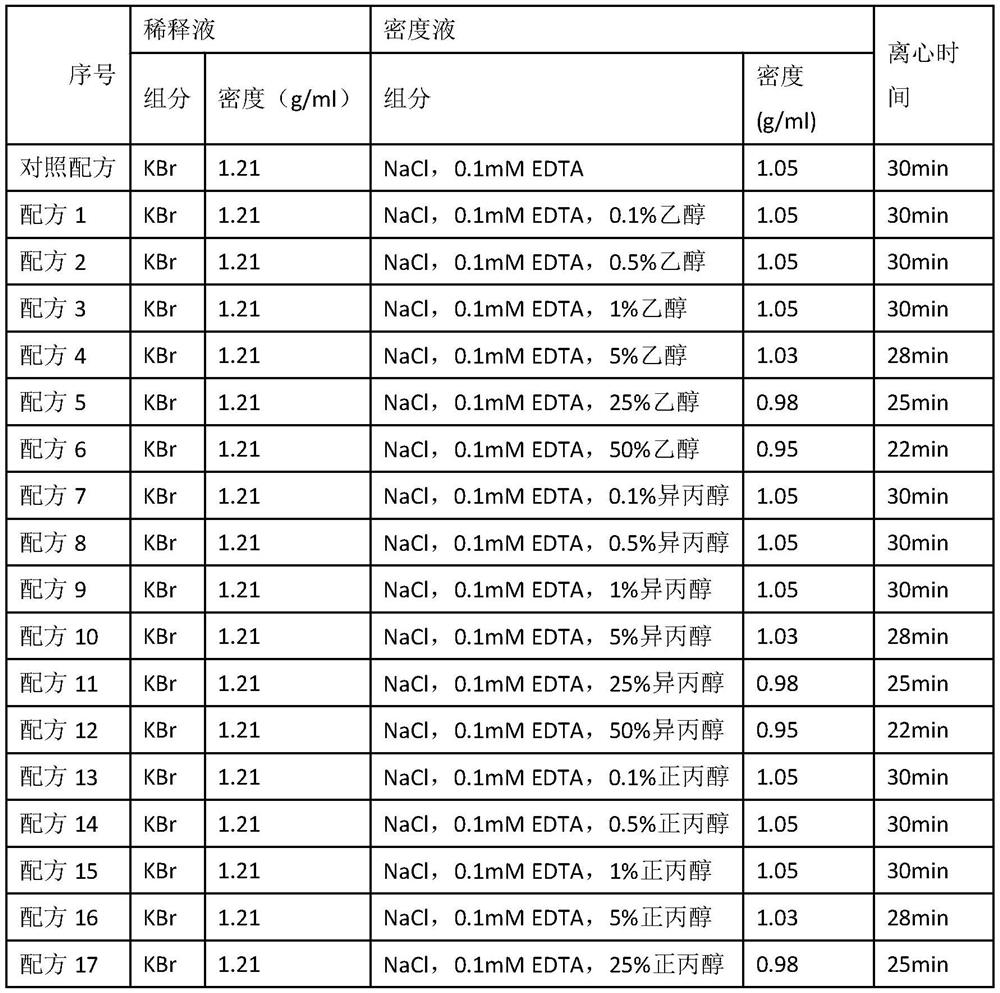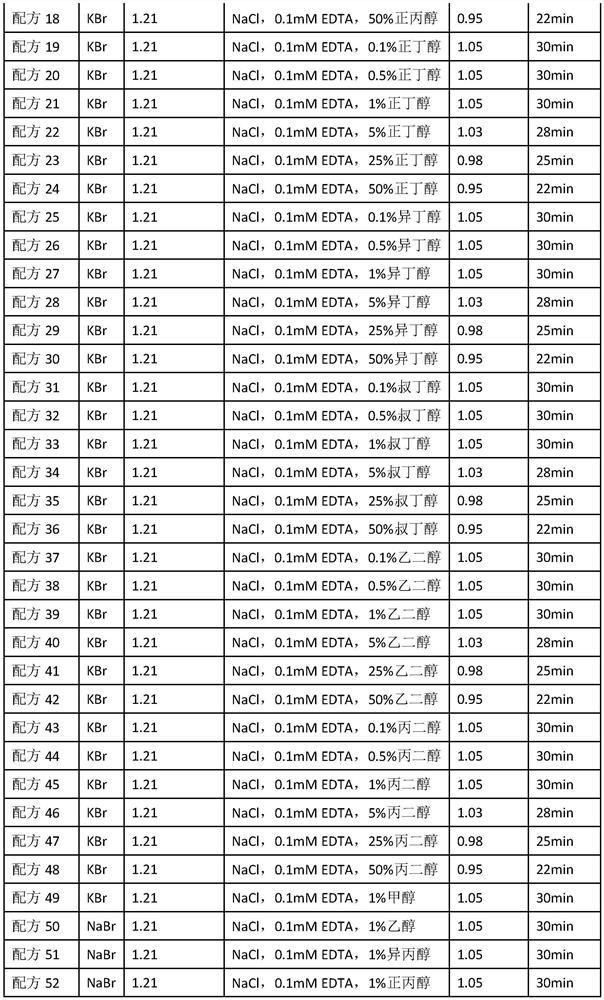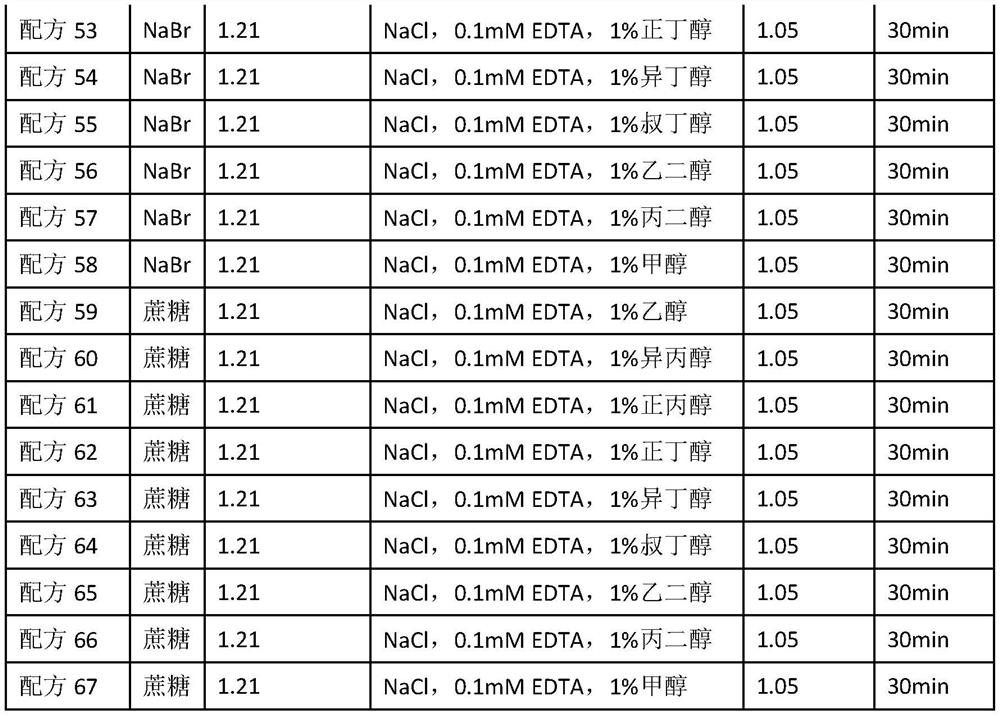Reagent for detecting concentration of lipoprotein particles and use method thereof
A lipoprotein particle and lipoprotein technology, which is applied in particle suspension analysis, measuring device, suspension and porous material analysis, etc., can solve problems affecting precision and poor precision
- Summary
- Abstract
- Description
- Claims
- Application Information
AI Technical Summary
Problems solved by technology
Method used
Image
Examples
Embodiment 1
[0037]Reagent formulation and testing step
[0038]Take the serum 50 ul, add 1950 ul of dilution (see Table 1 below), mix. Take a 5.0ml Polyallomer snap-in, add 3800 ul of the density solution (see Table 1 below), then slowly add a pre-diluted serum sample 1200UL from the bottom. The centrifuge is placed in the rotor VTI-65.2 rotor and centrifuged with a beckman ultracenter. Parameters: Turn speed = 65000rpm, time (see below), temperature = 23 ° C, acceleration = 6, deceleration = 6.
[0039]Carefully moved the sample after centrifugation to the lipoprotein particle concentration detection instrument for detection. The buffer used for detection is 20 mM phosphate buffer, pH 7.0.
[0040]Table 1. Formulation of different combinations
[0041]
[0042]
[0043]
[0044]The part of the above table did not indicate the concentration, such as KBR, which was used to adjust the density of the diluent, and the solid KBR was added to the density of 1.21 g / ml, NABR, sucrose such as 1.21 g / ml, Nabr, sucrose. N...
Embodiment 2
[0046]Precision experiment
[0047]Take a sample, using this detection system, repeatedly detected 10 times, calculate the precision of the lipoprotein particles concentration, and the results are shown in Table 2, the sample formulation employed is the formulation configured in the example, and the formulation 1 in Table 2 1 The recipe 1 in Table 1 (Component: Diluent KBr, density 1.21 g / ml; Density NaCl, 0.1 mM EDTA, 0.1% ethanol, density 1.05 g / ml; centrifugal time 30 min), the same.
[0048]Table 2 Precision (sample 1, Tg concentration: 1.5mm)
[0049]
[0050]
[0051]
[0052]Table 3 Precision (sample 2, Tg concentration: 2.0mm)
[0053]
[0054]
[0055]
[0056]Table 4 Precision (sample 3, Tg concentration: 3.2mm)
[0057]
[0058]
[0059]
[0060]Table 5 Precision (sample 4, Tg concentration: 4.5mm)
[0061]
[0062]
[0063]
[0064]Table 6 Precision (sample 5, Tg concentration: 6.2mm)
[0065]
[0066]
[0067]It can be seen that this test system detects several different lipoprotein particles concentrations, which have better p...
Embodiment 3
[0069]Linear experiment
[0070]Each project takes a high value sample, diluted with water into different concentration gradients, and detects this test system to verify its linear range. The specific linear ranges of the validated items are HDL-P: 1-80umol / L; LDL-P: 20-6000 nmol / L; LPA-P: 2-300 nmol / L; IDL-P: 1-100 nmol / L; VLDL-P: 2-500 nmo / L. The specific results of the determination of the linear range verification are shown in Table 3.
[0071]Table 7 Linear range verification results
[0072]
[0073]
[0074]
[0075]It can be seen that the linear range of these lipoprotein particles concentrations can meet the indicator requirements, covering the clinical detection, which has better linearity within this linear range.
PUM
| Property | Measurement | Unit |
|---|---|---|
| Density | aaaaa | aaaaa |
Abstract
Description
Claims
Application Information
 Login to View More
Login to View More - R&D
- Intellectual Property
- Life Sciences
- Materials
- Tech Scout
- Unparalleled Data Quality
- Higher Quality Content
- 60% Fewer Hallucinations
Browse by: Latest US Patents, China's latest patents, Technical Efficacy Thesaurus, Application Domain, Technology Topic, Popular Technical Reports.
© 2025 PatSnap. All rights reserved.Legal|Privacy policy|Modern Slavery Act Transparency Statement|Sitemap|About US| Contact US: help@patsnap.com



